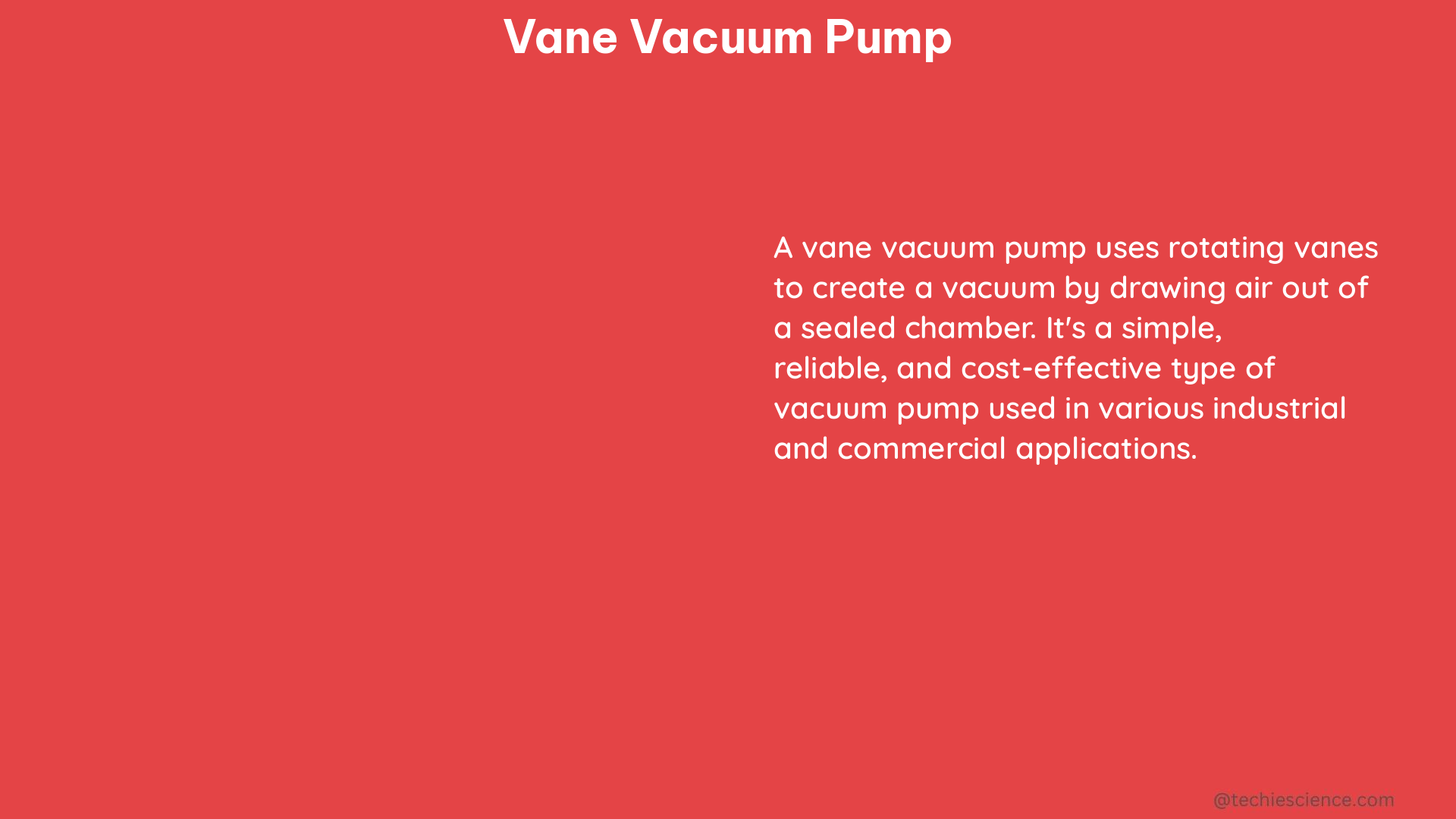A rotary vane vacuum pump is a versatile and essential tool used to create a vacuum by removing gas molecules from a sealed chamber. It operates based on the principle of a rotor with several sliding vanes that divide the pumping chamber into multiple sections. As the rotor turns, it reduces the volume of each section, which in turn reduces the pressure and draws gas molecules into the pump.
Understanding the Technical Specifications of Vane Vacuum Pumps
The technical specifications of a vane vacuum pump can vary depending on the model and manufacturer. Let’s take a closer look at the key details:
Suction Capacity
- The suction capacity of a vane vacuum pump is typically measured in cubic meters per hour (m³/h) or liters per minute (L/min).
- For example, the 2-Stage Rotary Vane Vacuum Pump from Fisherbrand has a suction capacity ranging from 2 m³/h to 28 m³/h.
- Higher suction capacity indicates the pump’s ability to remove more gas molecules from the sealed chamber, making it suitable for larger-scale applications.
Ultimate Vacuum
- The ultimate vacuum, or the lowest pressure the pump can achieve, is another crucial specification.
- The 2-Stage Rotary Vane Vacuum Pump from Fisherbrand has a maximum ultimate vacuum of 0.1 mbar.
- The lower the ultimate vacuum, the more effective the pump is at creating a high-vacuum environment.
Dimensions and Weight
- The dimensions and weight of a vane vacuum pump can be important factors, especially when considering installation and portability.
- The 2-Stage Rotary Vane Vacuum Pump from Fisherbrand has dimensions of 24.8 x 13.8 x 16.5 inches (L x W x H) and weighs approximately 77 lbs.
- Compact and lightweight pumps may be more suitable for certain applications, while larger and heavier models may be necessary for higher-capacity requirements.
Power Consumption
- The power consumption of a vane vacuum pump can vary depending on the model and the specific operating conditions.
- For the 2-Stage Rotary Vane Vacuum Pump from Fisherbrand, the power consumption is rated at 1.5 kW.
- Understanding the power requirements can help ensure the pump is compatible with the available electrical infrastructure and can be operated efficiently.
Maintaining and Testing Vane Vacuum Pumps

Proper maintenance and testing are crucial for ensuring the longevity and optimal performance of your vane vacuum pump. Here are some key considerations:
Oil Level and Quality
- Checking the oil level and quality is essential for maintaining the pump’s performance and longevity.
- The oil should be changed regularly, and the amount of oil used can be measured in milliliters (mL) or ounces (oz).
- For example, the 2-Stage Rotary Vane Vacuum Pump from Fisherbrand requires approximately 1.1 liters (37 oz) of oil.
- Using the recommended oil type and maintaining the proper oil level can help prevent premature wear and tear on the pump’s internal components.
Suction Capacity and Vacuum Level Testing
- Testing the pump’s suction capacity and vacuum level can provide valuable insights into its performance.
- This can be done using specific gauges and instruments, such as a vacuum gauge or a flow meter.
- For the 2-Stage Rotary Vane Vacuum Pump from Fisherbrand, the suction capacity can be measured using a flow meter, while the vacuum level can be tested with a vacuum gauge.
- Comparing the measured values to the manufacturer’s specifications can help identify any potential issues or degradation in the pump’s performance.
Noise and Vibration Monitoring
- Monitoring the noise and vibration levels of the vane vacuum pump can also be a useful diagnostic tool.
- Excessive noise or vibration may indicate issues with the pump’s internal components, such as worn bearings or misalignment.
- Using a sound level meter and a vibration analyzer can provide quantifiable data on the pump’s operating conditions.
- For the 2-Stage Rotary Vane Vacuum Pump from Fisherbrand, the noise level should not exceed 65 dB(A), and the vibration level should be within the manufacturer’s recommended range.
By understanding the technical specifications, maintenance requirements, and testing procedures for your vane vacuum pump, you can ensure its optimal performance, longevity, and efficiency in your DIY projects or industrial applications.
References
- Rotary Vane Vacuum Pumps Market Insights Research Report (2024-05-07)
- Rotary Vane Pumps – Welch Vacuum
- Diagnostics of Rotary Vane Vacuum Pumps Using Signal Analysis (2019)
- 2-Stage Rotary Vane Vacuum Pumps (2021)
- Testing Rotary Vane Vacuum Pump – How to? – DoItYourself.com (2018-01-25)

The lambdageeks.com Core SME Team is a group of experienced subject matter experts from diverse scientific and technical fields including Physics, Chemistry, Technology,Electronics & Electrical Engineering, Automotive, Mechanical Engineering. Our team collaborates to create high-quality, well-researched articles on a wide range of science and technology topics for the lambdageeks.com website.
All Our Senior SME are having more than 7 Years of experience in the respective fields . They are either Working Industry Professionals or assocaited With different Universities. Refer Our Authors Page to get to know About our Core SMEs.